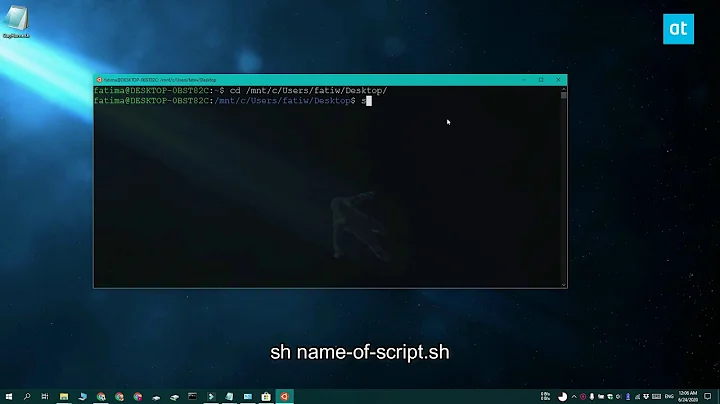How to start a shell without any user configuration?
Solution 1
You can pass the --noprofile and --norc command-line options:
$ bash --noprofile --norc
You will find documentation about these options in the man page.
Solution 2
Running bash --noprofile --norc still inherited from parent process. Based on a similar question I found that the way I interpreted this question env -i bash --norc --noprofile was what I would want.
Solution 3
Use --noprofile --norc:
--noprofile
Do not read either the system-wide startup file /etc/profile or any of the personal initializa‐
tion files ~/.bash_profile, ~/.bash_login, or ~/.profile. By default, bash reads these files
when it is invoked as a login shell (see INVOCATION below).
--norc Do not read and execute the system wide initialization file /etc/bash.bashrc and the personal
initialization file ~/.bashrc if the shell is interactive. This option is on by default if the
shell is invoked as sh.
(from the manpage).
Solution 4
It is often desirable to launch an entirely blank bash:
- no environment variables carried from the parent shell;
- an empty home dir without any package-specific configuration files (e.g.
.gitconfigand.local/...); - no shell configuration files.
This works for me both on MacOS and Linux:
env -i HOME=$(mktemp -d) bash --noprofile --norc
cd
In that bash shell, the HOME dir is that test dir just created (change the name if needed), and there are no particular settings. The only environment variables that are set are PWD, HOME, and SHLVL.
Upon starting bash, the PWD is where we were before, so we need to do that initial cd.
Example (Linux):
$ env -i HOME=$(mktemp -d) bash --noprofile --norc
bash-5.0$ cd
bash-5.0$ pwd
/tmp/tmp.mwgHRQE1aJ
bash-5.0$ printenv
PWD=/tmp/tmp.mwgHRQE1aJ
HOME=/tmp/tmp.mwgHRQE1aJ
SHLVL=1
OLDPWD=/home/xxxxxxxxxxxxxxxxx
_=/usr/bin/printenv
bash-5.0$
Related videos on Youtube
lil
Updated on July 19, 2022Comments
-
lil almost 2 years
I need to use a "clean" shell (e.g. bash) under Linux/OSX terminal without any user configuration, but it reads config info from some files (e.g ~/.bashrc) every time it starts. I can modify the file every time I need a "clean" shell, and revert it back when I finished, but is there any easier ways to do this, for example a command?
-
Gurjeet Singh about 4 yearsThe answers provided below are also useful when, say, one makes a mistake in their
.bashrcor.bash_profilefiles that causes the shell to exit prematurely.
-
-
DaoWen almost 9 yearsThanks for the
env -itip! This ended up being a little too clean for me, since I just wanted to get rid of my custom settings, but I still needed the system-wide settings. This is what I ended up using:env -i bash --rcfile /etc/profile -
nnutter over 8 years
bash --noprofile --norcstill inherits from parent process. -
Marnix A. van Ammers over 7 yearsGreat tip. The "env -i" is exactly what I needed. My bash_profile was still being read in despite the "--noprofile --norc" .
-
 Chad almost 7 yearsYou didn't need the argument --noprofile as it's only relevant if you have a login shell.
Chad almost 7 yearsYou didn't need the argument --noprofile as it's only relevant if you have a login shell. -
wisbucky over 6 yearsThis was good enough for me. Got rid of my aliases, prompts, etc.
-
vulcan raven over 4 yearsIt still inherits the
history. -
thc almost 3 yearsWhat's the difference between
env -i bash --norc --noprofileandbash --norc --noprofile? -
David Xia about 2 years@thc according to man page,
-i, --ignore-environment start with an empty environment -
Harmen almost 2 years
env -i PATH=/usr/bin:/bin "TERM=$TERM" "HOME=$HOME" bash --noprofile --norc



![Use Netcat to Spawn Reverse Shells & Connect to Other Computers [Tutorial]](https://i.ytimg.com/vi/VF4In6rIPGc/hq720.jpg?sqp=-oaymwEcCNAFEJQDSFXyq4qpAw4IARUAAIhCGAFwAcABBg==&rs=AOn4CLBw0kJstbtMlYYDVLrpJ4kwln6PKQ)




![Super Abotun World KEEPS GETTING BETTER! [Part 2]](https://i.ytimg.com/vi/oalEd_hB6o0/hqdefault.jpg?sqp=-oaymwEcCOADEI4CSFXyq4qpAw4IARUAAIhCGAFwAcABBg==&rs=AOn4CLDGLnLZfJRpSlCyx5wXJgSReLUCiQ)




